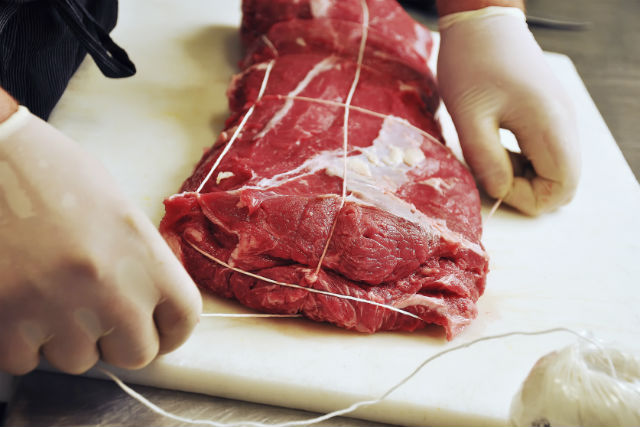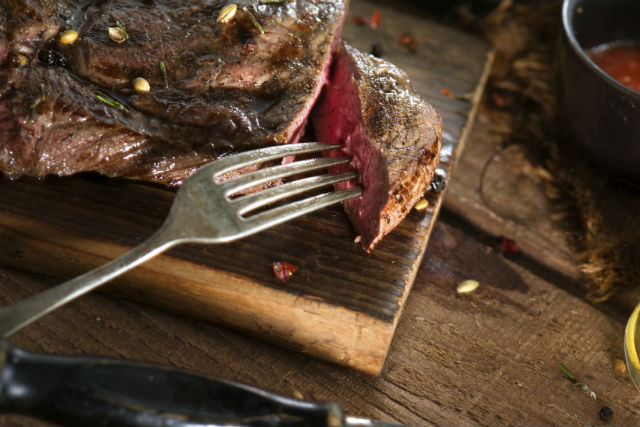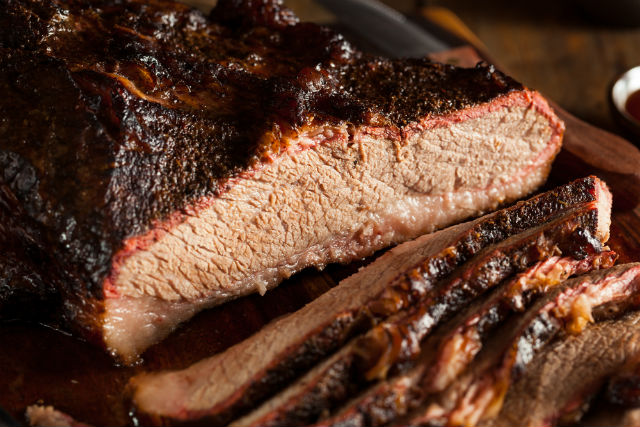Navigating a butcher shop can be super intimidating, even for an experienced home cook. And it doesn’t help that the names of different cuts of meat can vary widely regionally or even from shop to shop along the same street, particularly in the meat world.
We recently asked Paul Whitman of NYC’s historic Fischer Bros & Leslie Butcher to help us understand how best to navigate the daunting kosher butcher: the names of different cuts of meat, how to choose the best meat for the occasion and also how best to cook various kinds of meat. (Don’t forget to check out their recipe for Garlic Braised Brisket. Yum.) And yes – some of these are YOUR questions from our Facebook page, so thanks for the help!
Question: What is the most underutilized cut of beef, and what are the best ways to prepare it?
The Nosher celebrates the traditions and recipes that have brought Jews together for centuries. Donate today to keep The Nosher's stories and recipes accessible to all.
Answer: Filet chuck is both under-utilized and one of the most economical, flavorful cuts. You can remove the marbled rectangular section which is excellent for broiling. Sold separately we call this a Strip Steak. The rest of the chuck is great for stew and is also for ground beef. Prepared whole the chuck fillet can be a very tasty “pot roast” cooked similar to brisket but often juicier and even more tender.
Question: What is the difference between skirt steak, flat iron steak and hangar steak?
Answer: Both the skirt steak and the hangar steak are part of the diaphragm of the cow. The hangar steak, from the belly of the diaphragm, is a thicker cut, about 2 lbs. The skirt steak, or outer diaphragm is a long thin cut, 3 inches wide, 18 inches long and perhaps a 1/2 ” thick. Both cuts are very lean, pretty tender and are excellent grilled but be careful not to overcook as they can dry out quickly.
The “Flat Iron Steak” is cut from the shoulder and in our shop it is called a split fillet (also known as a split minute roast). It is an oval shaped cut with a heavy external membrane that typically weighs 5 to 6 lbs before trimming. By removing the outer membrane and then splitting it horizontally to remove the thick central membrane, it yields two tender steaks used for grilling or broiling (London Broil). I recommend marinating this cut of meat, which is one of my family’s favorites.
Question: What are the best steaks/cuts of meat for weeknight dinners? For ?
Answer: For weeknights, broiling is often an easy, quick way to prepare meat. Rib steaks, veal chops and Shoulder or rib lamb chops are ideal, as is cut up chicken, boneless chicken breast or thigh chicken cutlets. For Shabbat customers often want a meal that can be kept warm on a “Blech,” or in the oven, and pot roast, stew or are most ideal.
Question: What kind of meat is ideal for stew or cholent?
Answer: For cholent, flanken is the traditional meat. Fillet chuck, often cut in large chunks is a tasty and more economical cut – you can also add marrow bones for additional flavor. For a beef stew, cubed chuck is the best cut, but neck of veal, lamb shoulder (with or without bones) or cut up lamb shanks neck can also be used.
Question: I have never cooked lamb before – what’s the easiest cut to start with?
Answer: Cooking lamb is quite easy and not all that different from preparing beef or veal. Shoulder lamb chops are easy to broil, lightly seasoned with a bit of ground garlic. A lamb stew is an easy meal prepared just as you would beef stew. A lamb shoulder roast, usually boneless, is also easy to prepare in the oven, just like a beef roast but cooked a bit longer. As with any oven roast a meat thermometer is essential.
Question: What are some of the most confusing or commonly misnamed cuts of meat?
Answer: There is a standard naming structure provided by the USDA but many shops don’t always adhere to this. For example, one NYC butcher shop was using a cut of meat they called “butcher’s surprise” which sounded odd to me, so we decided to call ours a “Crescent Steak” since the sliced Rib Steak wraps around the eye like a crescent moon. Thus “Crescent Steak” was born which I have now seen used by other kosher butcher shops.
Flanken is also sometimes confusing. Most understand a strip of flanken to include the bones on the bottom but the same cut is used to make Beef Spare Ribs by cutting it along the bone. The same cut is used to make beef “Short Ribs” by cutting thicker slices of flanken and then cutting between each bone to give a large square of meat with a single bone on the bottom.
The “Square Roast” is also called a “Brick Roast,” but both terms refer to the tender fillet of the chuck cut from the neck. The “Minute Roast” can be cut into “Minute Steaks,” which are small and oval with a membrane in the middle but is also excellent when split into two “London Broils.” We call this a “Split Fillet” but sometimes it is referred to as a “Split Minute Roast.” The term “London Broil” itself is often confusing but simply refers to a larger steak that will be broiled and then sliced for serving. Several cuts can be used for London Broil including the Split Fillet, a Silver Tip London Broil, the Square or Brick Roast, the Blade London Broil from the shoulder and the Crescent Steak.
“Pot Roast” is another term which refers to several cuts which will be slow cooked, typically in a combination of broth, seasoning and vegetables. Cuts typically used for Pot Roast include: First Cut Brisket, Second Cut Brisket, Top of the Rib, Side Steak, Deckle or Chuck. Brisket too, often needs explanation: The First Cut (actually the bottom of the breast) is a very lean cut of uniform thickness up to 8 or 9 pounds. The Second Cut Brisket which lays on top of the First Cut is a smaller piece (3 to 5 lbs.) with more fat marbling yielding a juicier Pot Roast often preferred by gourmets.
Love Jewish food? Sign up for our weekly Nosher recipe newsletter!






